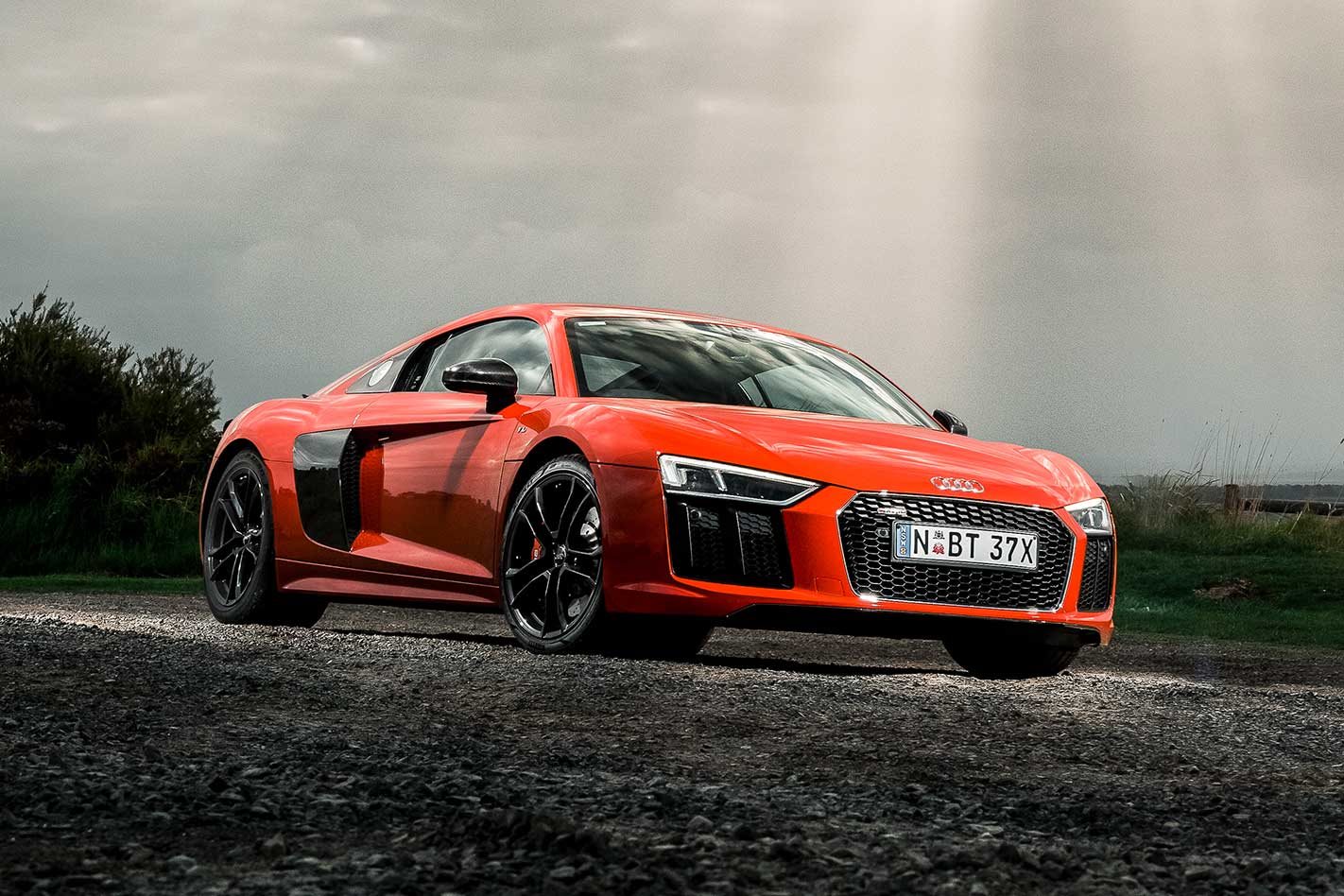The monotony of Melbourne’s freeways is now behind us and the road ahead turns twisty as it ducks, dives and dips its way into the lush, green heartland of Victoria’s South Gippsland region.
A press of the ‘Drive Select’ activates Dynamic mode, the R8 RWS’s seven-speed dual-clutch ’box immediately dropping a couple of cogs in response and the V10 engine note hardening correspondingly. Another button press switches the ESP to Sport and we’re ready to discover what happens when you pull the front driveshafts out of a 400kW supercar.
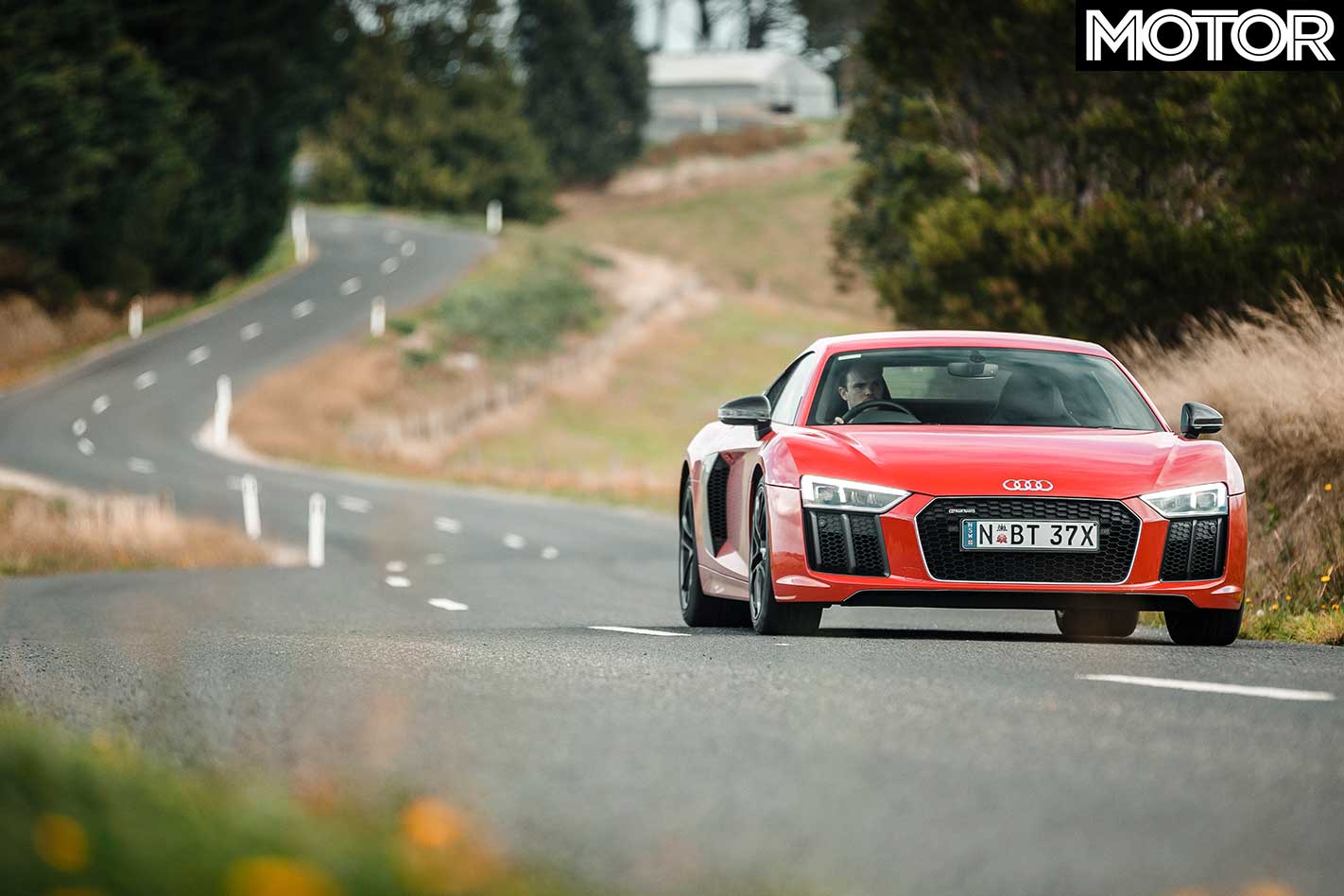
On the face of it, Audi’s decision to build a rear-wheel drive R8 merely follows the example set by its twin-under-the-skin, the Lamborghini Huracan LP580-2.
However, the RWS – which stands for ‘Rear Wheel Series’ – represents a much more significant philosophical shift for a company that has built its performance reputation on the superiority of all-wheel drive. WRC, BTCC, IMSA, WEC – Audi has dominated virtually every motorsport category it’s ever entered largely thanks to its commitment to quattro.
This could be the final generation of Audi R8
According to former Audi Sport CEO, Stephan Winkelmann, who now heads Bugatti and, surely not coincidentally, used to be the boss at Lamborghini: “The R8 V10 RWS is made for purists. A special model for customers with an appreciation for essential driving enjoyment.”

The marketing justification is that Audi’s GT3 car, the R8 LMS, is rear-wheel drive, subtly ignoring the fact the regulations dictate it be so. Nonetheless, Audi is merely dipping a toe in the rear-drive waters, as just 999 RWS, with an unspecified split between Coupe and Spyder, will be built.
If Audi’s safe, sensible quattro models are the equivalent of healthy eating, the fun-first RWS is Ingolstadt’s admission it’s okay to have a burger and fries every now and then.
Aside from halving the number of driven wheels, differences between the RWS and its all-wheel drive sibling are relatively few. The RWS is based on the base R8, producing 397kW/540Nm from its 5.2-litre V10 rather than the fruitier 449kW/560Nm of the ‘Plus’.
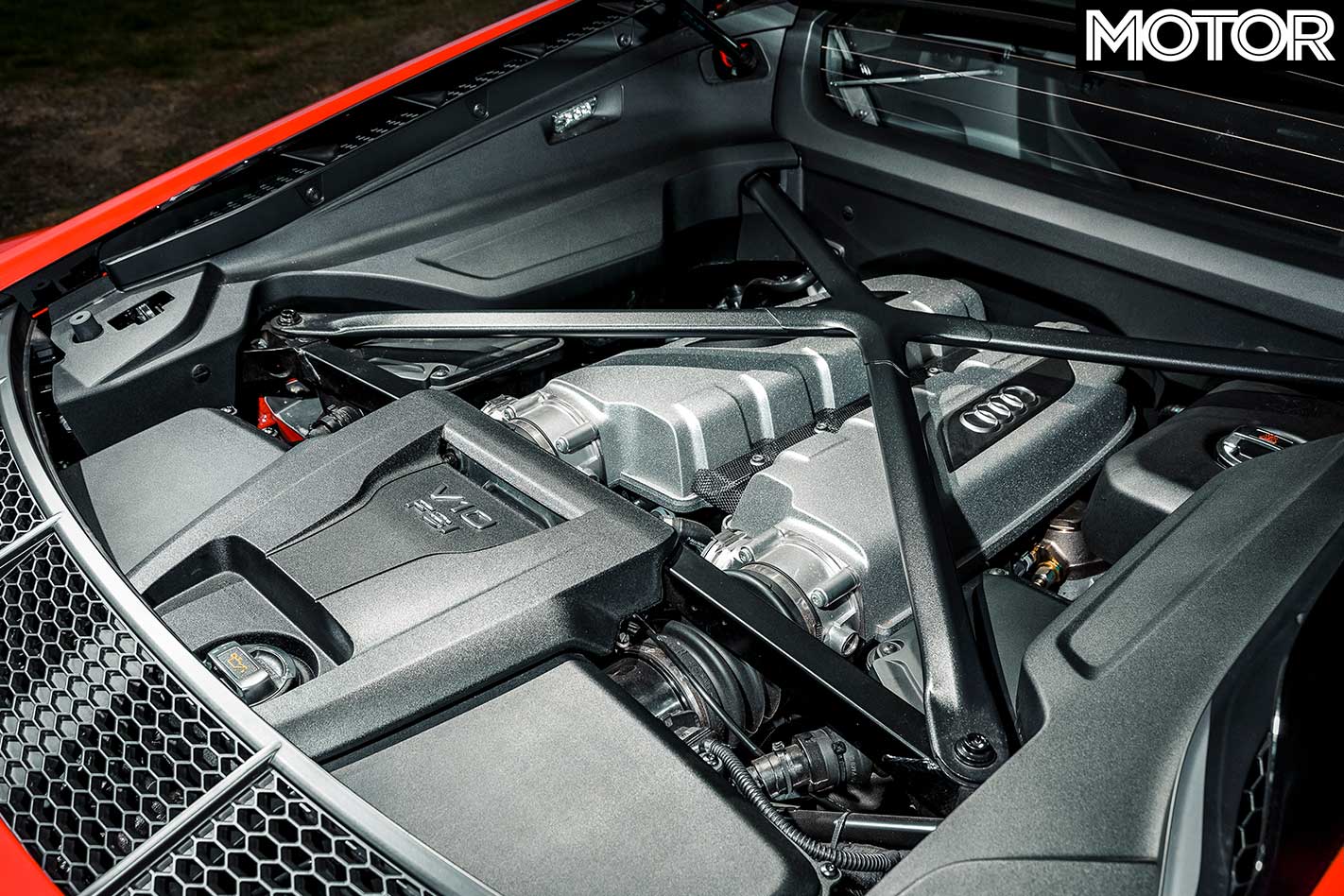
Dropping the front drive system saves 50kg (Spyder: 40kg), otherwise mechanically – brakes, steering, suspension – the cars are identical. Reduced traction adds 0.2sec to the 0-100km/h time (now 3.7sec for the coupe, 3.8sec for the Spyder) but the top speed remains 320km/h (Spyder: 318km/h).
In standard guise you’ll be able to identify an RWS by its matt-black grille and air intakes and body-coloured ‘side blade’, however, we suspect, like our test car, many will be optioned with the oh-so-cool carbon fibre side blades. Instead, you’ll have to hope buyers also tick the optional stripe pack, which runs fore-to-aft across the bonnet, roof and tail, inspired by the R8 GT4 LMS.
Audi has stripped back the spec – there’s no dynamic steering or adaptive suspension, for instance – but in an unusual move for a limited-edition release, it’s also pared back the price.
Granted, a $299,500 sticker before you start choosing options – our test car cost $321,100 – isn’t exactly affordable, but it’s the cheapest entry ticket into a bona-fide, mid-engine supercar on Aussie soil.
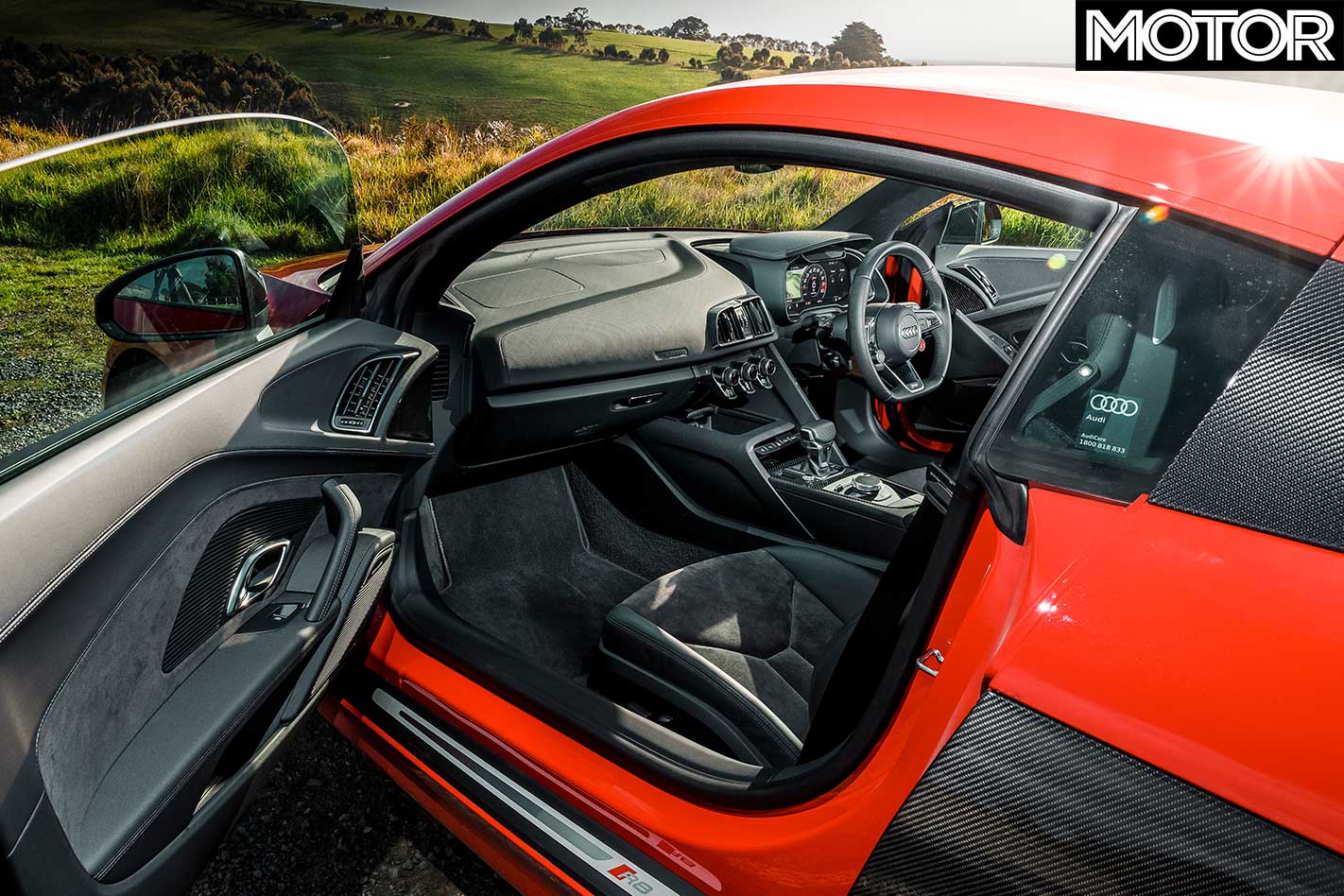
Equally, the lack of mechanical configurability is a blessing, preventing the need to button-bash like a hyperactive teenage gamer to dial up the appropriate driving mode.
Drive Select does alter the sharpness of the drivetrain, but I’ll bet the keys to your R8 RWS that virtually every car will spend its life in Dynamic. Audi’s 5.2-litre atmo V10 is one of the world’s great engines and only the pickiest observer would notice (or miss) the 52 absent kilowatts.
This is a stupendously fast car, unable to offer the instant gratification of its turbocharged rivals, but the breadth and linearity of its power delivery means that often you look down and think “how on earth did THAT number appear on the speedo?!” – you have been warned. About the only criticism of the R8’s powertrain is that onlookers are treated to more of the V10’s song than the person behind the wheel.
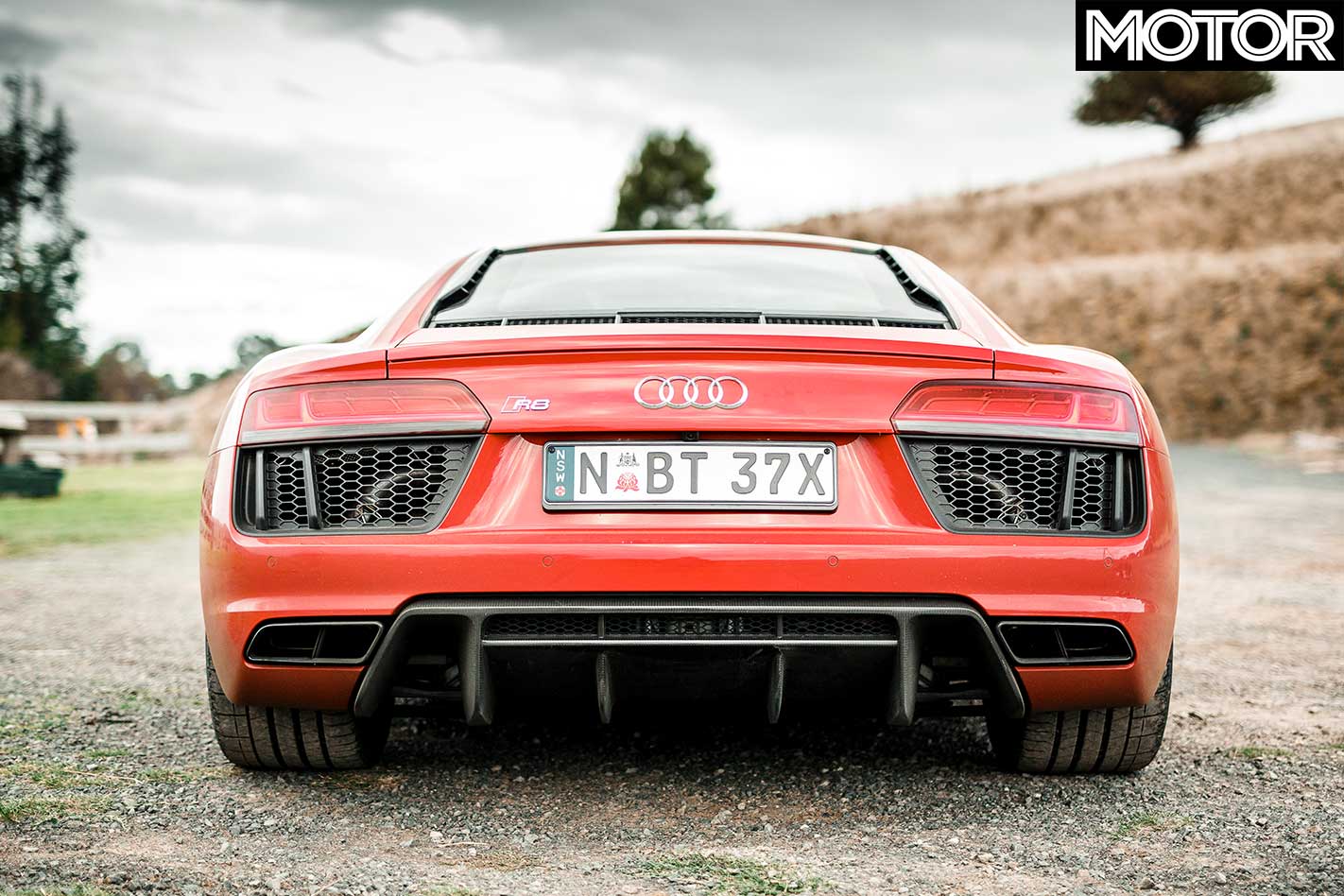
There’s still a rich bellow to enjoy inside, interspersed with staccato bursts of gunfire on the over-run, but to experience the full volume of the 10-cylinder bark you’re going to have to throw someone else the keys.
The good news is that person could be your grandmother, as the dual-clutch ’box not only changes gear with physics-defying speed, but also makes the R8 RWS a cinch to drive, so long as their hand doesn’t stray to the traction control switch.
This isn’t to suggest that Audi’s first rear-drive supercar is a wildly oversteering monster. In fact, for the vast majority of its dynamic envelope, the RWS feels much the same as its quattro twin.
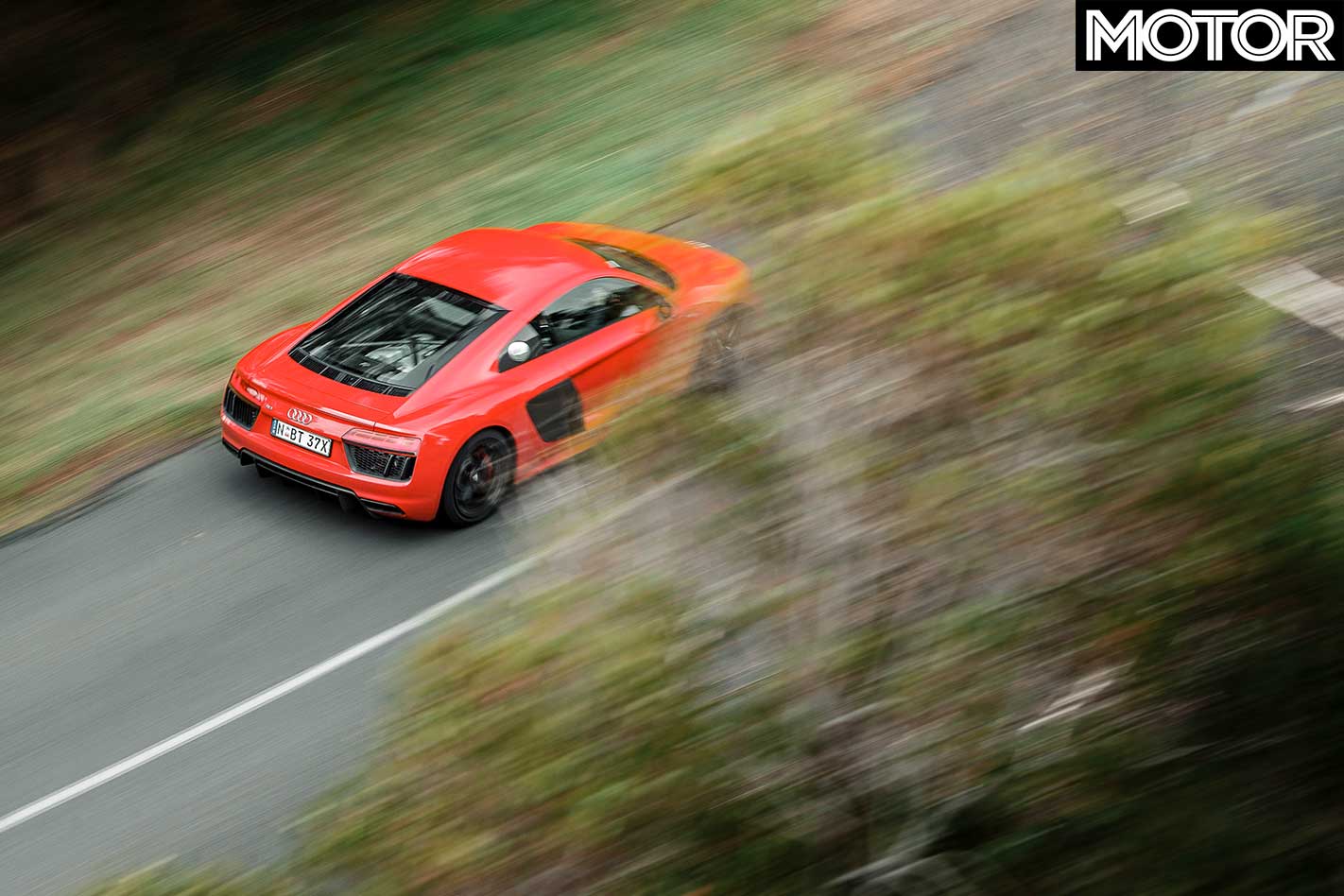
Once the tyres have sufficient heat in them traction is very strong, even in less than ideal conditions, thanks to 295mm-wide rear Pirelli P Zeros, and while it’ll squirm at the rear if you’re over-enthusiastic with your right foot in tight corners, the all-wheel drive R8’s rear-drive bias means it’ll happily adopt a similar attitude.
The further you delve into the RWS’s abilities, the more apparent its USP becomes: carry more corner speed, edge those tyres closer to their limit of adhesion then apply more throttle earlier.
All of a sudden the rear rubber is rotating ever so slightly faster than the front; not enough to alarm the ESP (in Sports mode at least) or require corrective lock, but enough to sense there’s a greater complexity to its character than your standard R8.
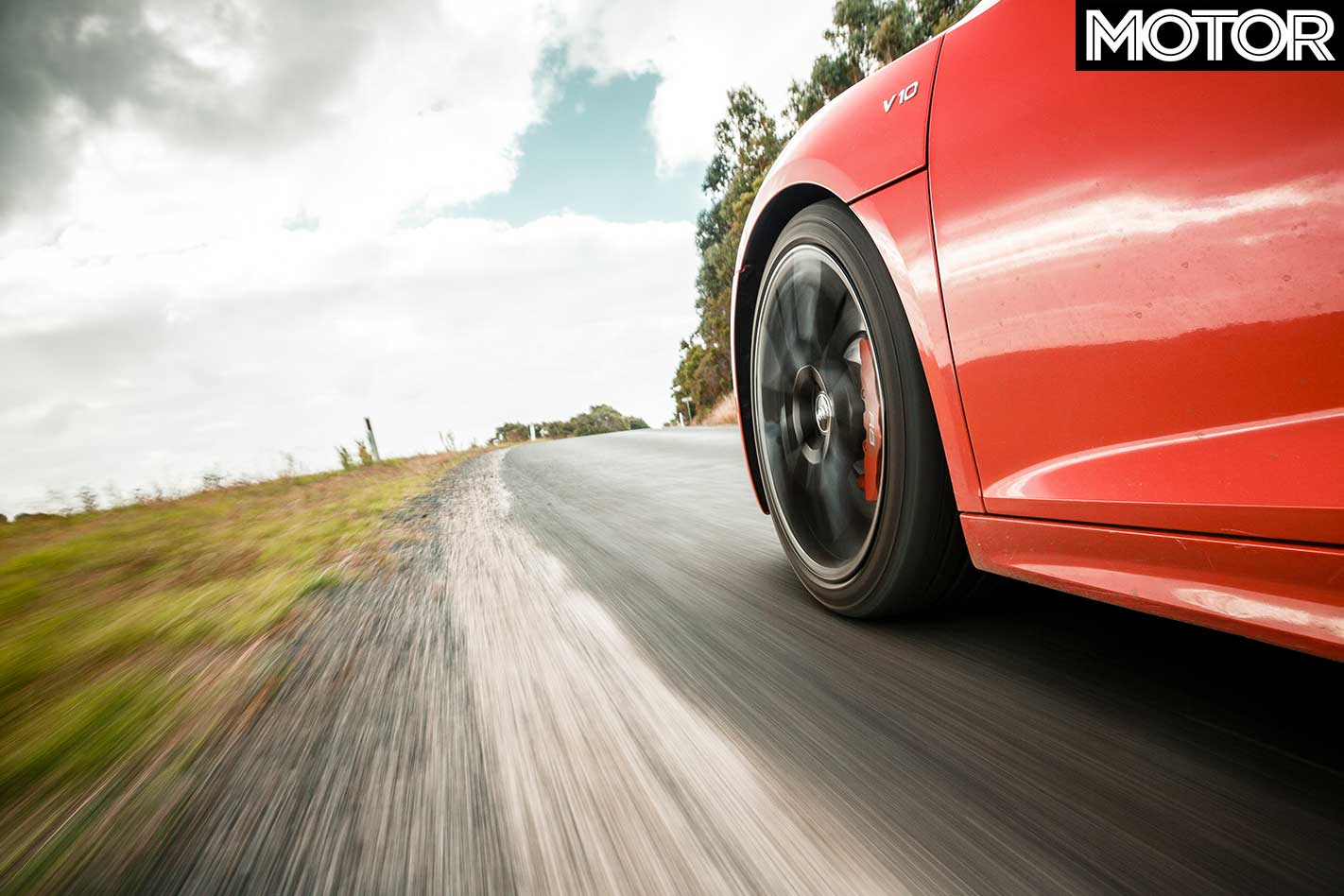
Dig deeper. Carrying brake pressure all the way to corner apex puts the RWS on its tippy toes, so that for a perfect, fleeting moment it’s in stasis, steering wheel straight, awaiting your next input. A hint of opposite lock will steady the ship, or in this case, supercar, but if you’re feeling bold the level of accelerator input will now dictate the drift angle.
It takes only a gentle application of throttle to break the Pirellis’ now tenuous grip on the tarmac, the V10 singing in celebration as you unlock the RWS’s reason for being. Fun.
We’re not suggesting it’s an ideal vehicle in which to learn the art of oversteer, but equally, nor is it a snappy, unpredictable handful – a skidpan would be the perfect place to fully exploit the RWS’s driftability, where its balance and ample steering lock should ensure that gratifying slides are more frequent than dizzying spins.
The real joy of the RWS is that it gives you options. It’s not some lairy hooligan constantly trying to outrun its tyre smoke. Driven quickly, yet sensibly, it’s capable of staggering pace, but if your talent and mood allows it’s capable of letting its hair down.
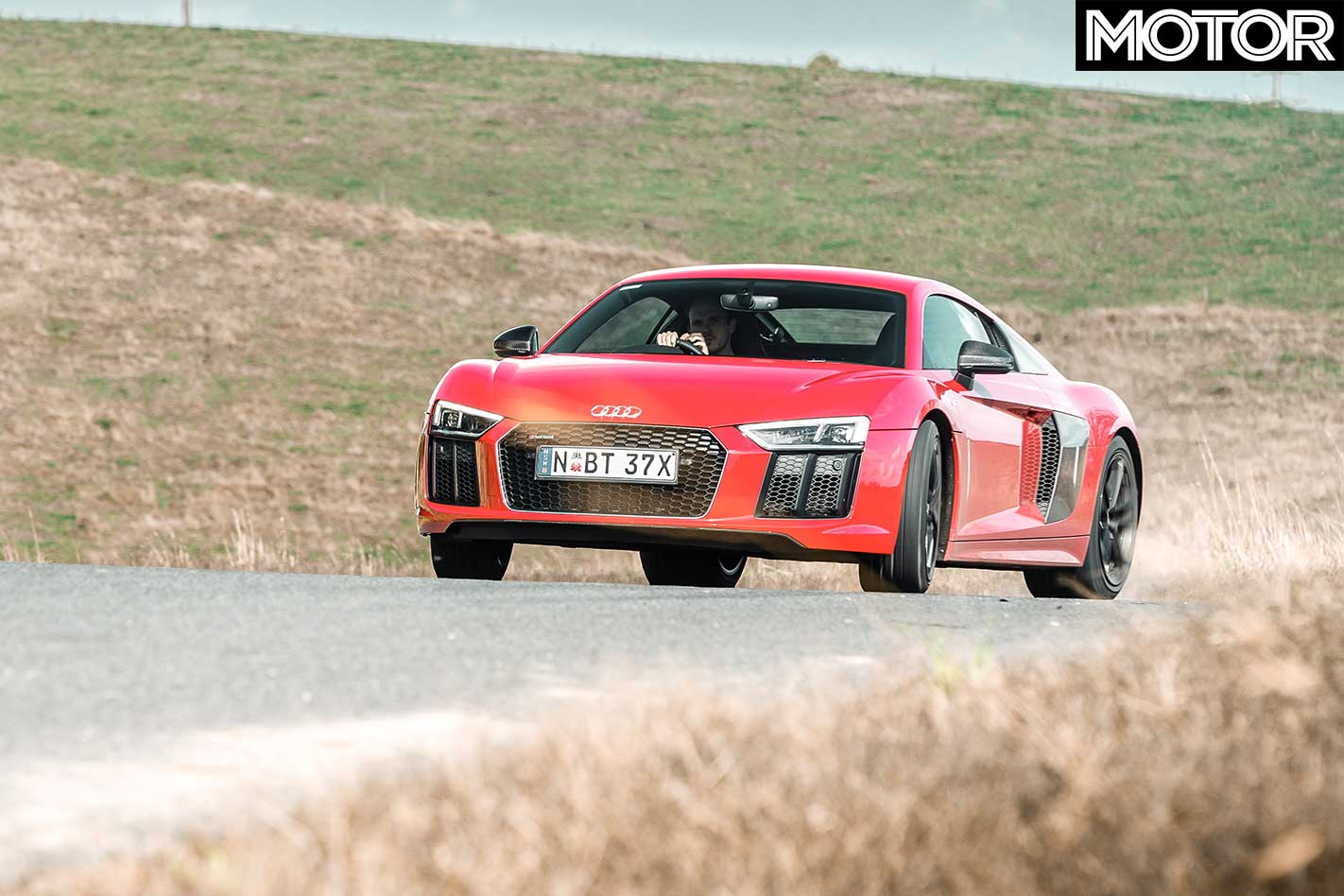
It’s a difficult car to criticise and to do so feels almost petty: on really challenging roads it could use a little more suspension travel, particularly at the rear, and perhaps the steering could be slightly quicker. But while this rear-drive R8 can’t quite offer the same level of intimate driver connection as the very best in the class (think 911 GT3, 488 GTB, 570S), the emotional connection forged by that engine is more than enough to compensate for any slight lack of steering feel.
It’s a bond that has the opportunity to grow every day, strengthened each time you blast away from an intersection or set of traffic lights, alarming or entertaining bystanders depending on the level of petrol in their veins. Because there’s nothing stopping you using the R8 RWS every day.
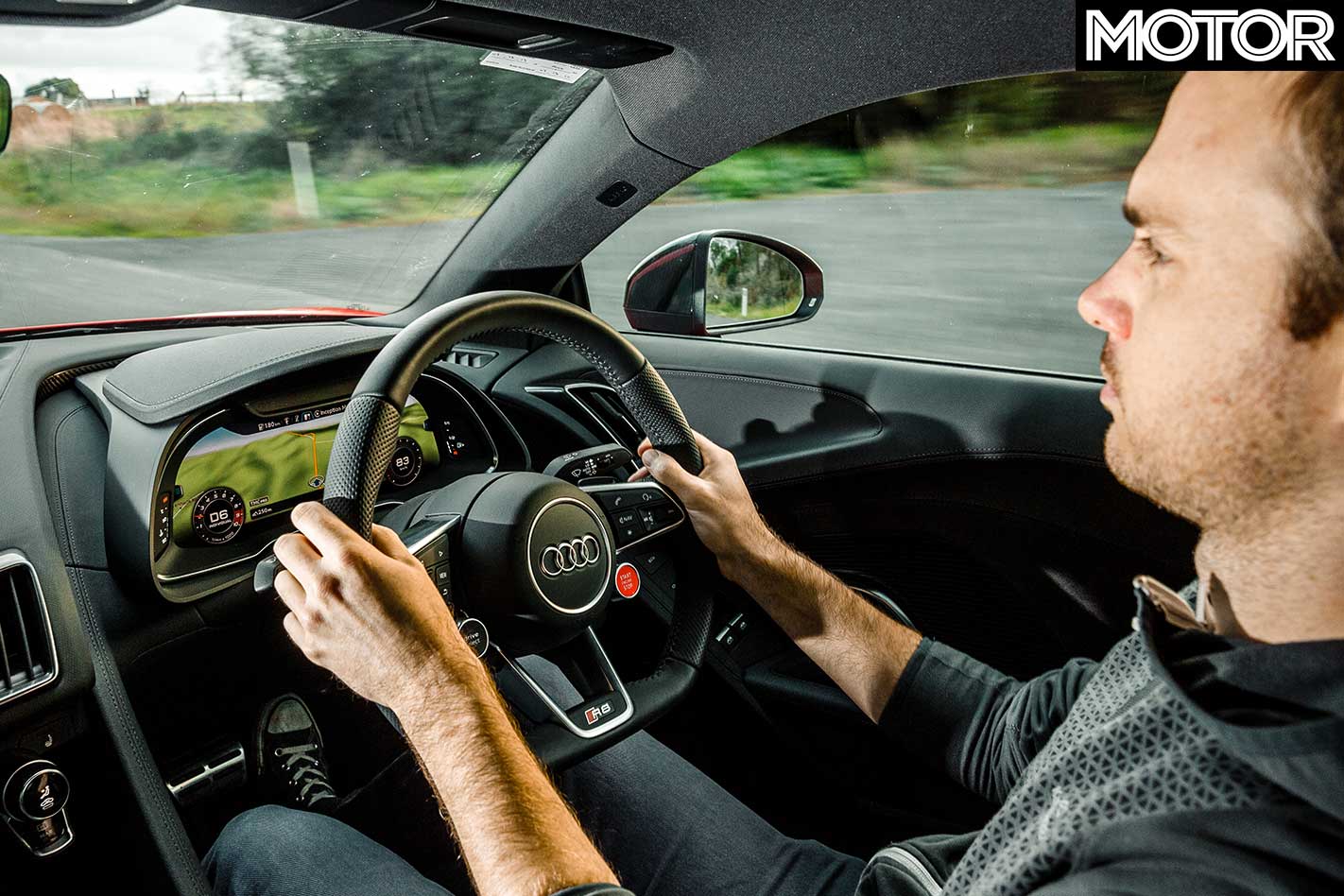
Its ride is firm enough over poor surfaces to elicit comment from your passenger, but pliant enough that they’ll get over it. Vision is good, the interior a great blend of design and ergonomics (though is it as special as the TT’s?) and it’s only marginally larger than a Ford Focus RS.
For those who don’t already have their name down for one of the 999, the biggest problem with the R8 V10 RWS is that Audi isn’t going to build enough of them. Often these limited editions eventually pop up as standard production models: for example, the Audi A1 quattro became the S1, the Porsche 911 R became the GT3 Touring and the Lamborghini Gallardo Balboni became the LP550-2.
Had Audi installed the full-whack 449kW engine and attached a silly price tag, there’d be strong reason to suspect it would do just that, but by offering the RWS at such a reasonable price (again, relatively speaking) makes it difficult to see how it is going to do this without annoying the 999 lucky sods that secured the current run.
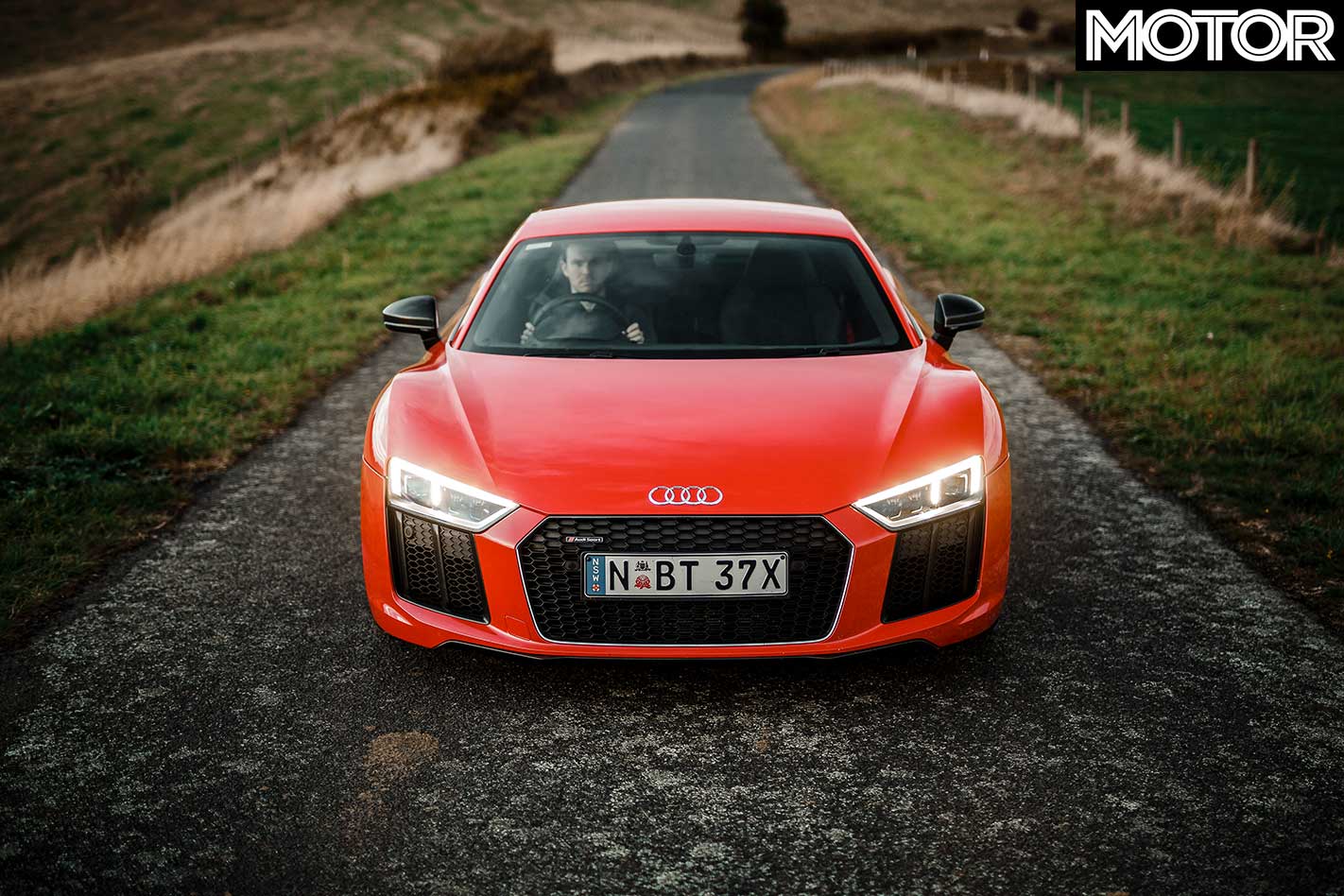
Perhaps it’ll appear as an option when the long-rumoured twin-turbo V6 arrives, but driving an R8 without a V10 would be like seeing Queen without Freddie Mercury – still good, but not the same.
Product planning arguments aside, Audi Sport’s decision to abandon its long-held belief that “quattro is the only way” has proved an inspired one, producing arguably the finest R8 yet. I’d certainly argue its case.
The RWS might not be quite as quick as a McLaren 540C, as practical as a 911 Turbo or as head-turning as a Lamborghini Huracan, but it almost matches each in its area of speciality. As it turns out, when you pull the front driveshafts out of a 400kW Audi, you create a supercar of rare cohesiveness.
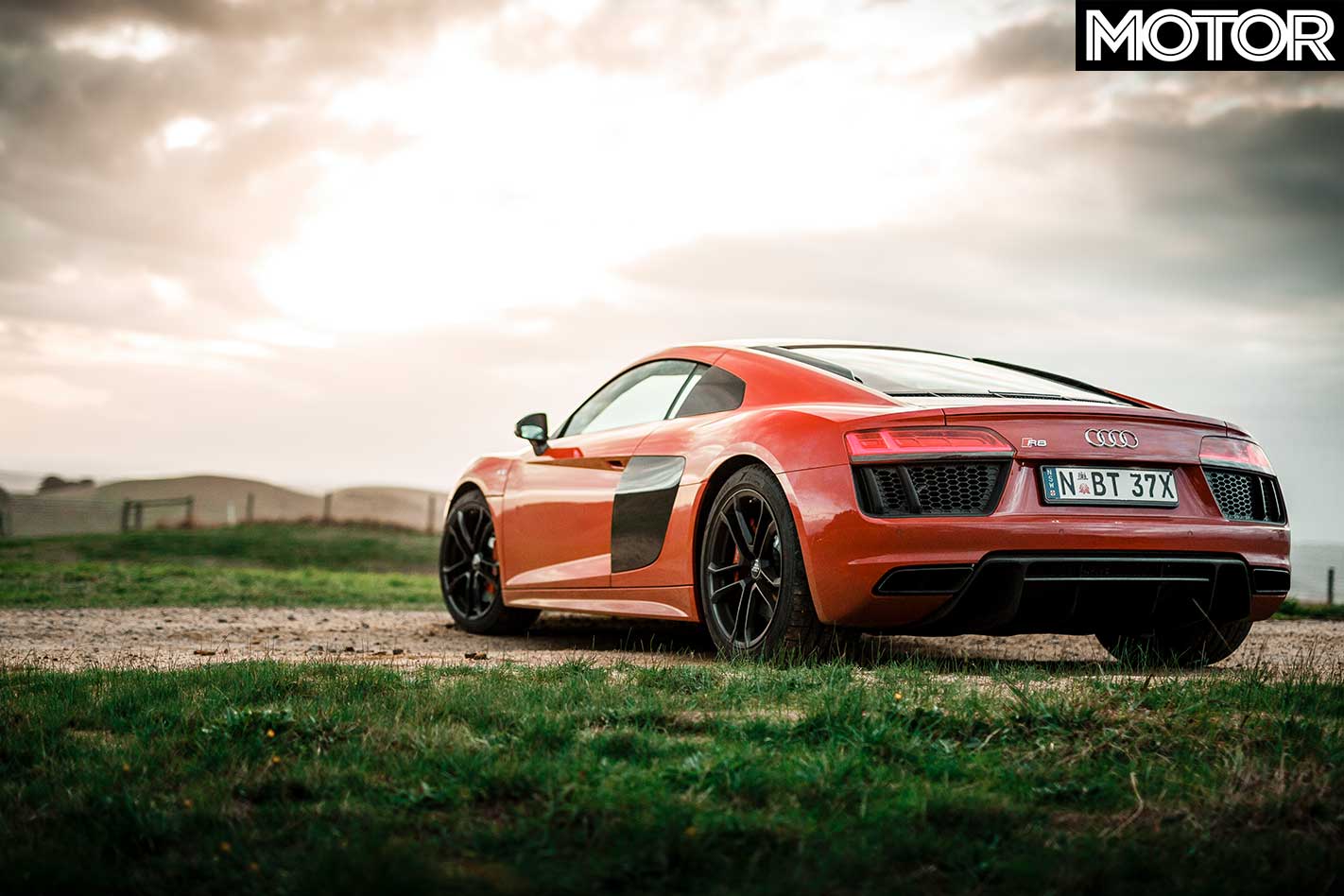
Audi R8 V10 RWS Pros & Cons
5 Highs: 1 – V10s make the best noises 2 – Spookishly quick dual-clutch ‘box 3 – Balanced, progressive chassis 4 – Everyday useability 5 – You can pretend to be Tony Stark
5 Lows: 1 – There’s not enough of them 2 – Carbon side blades optional 3 – Engine note a bit muted inside 4 – Rear tyres are expensive 5 – We can’t have a long-termer
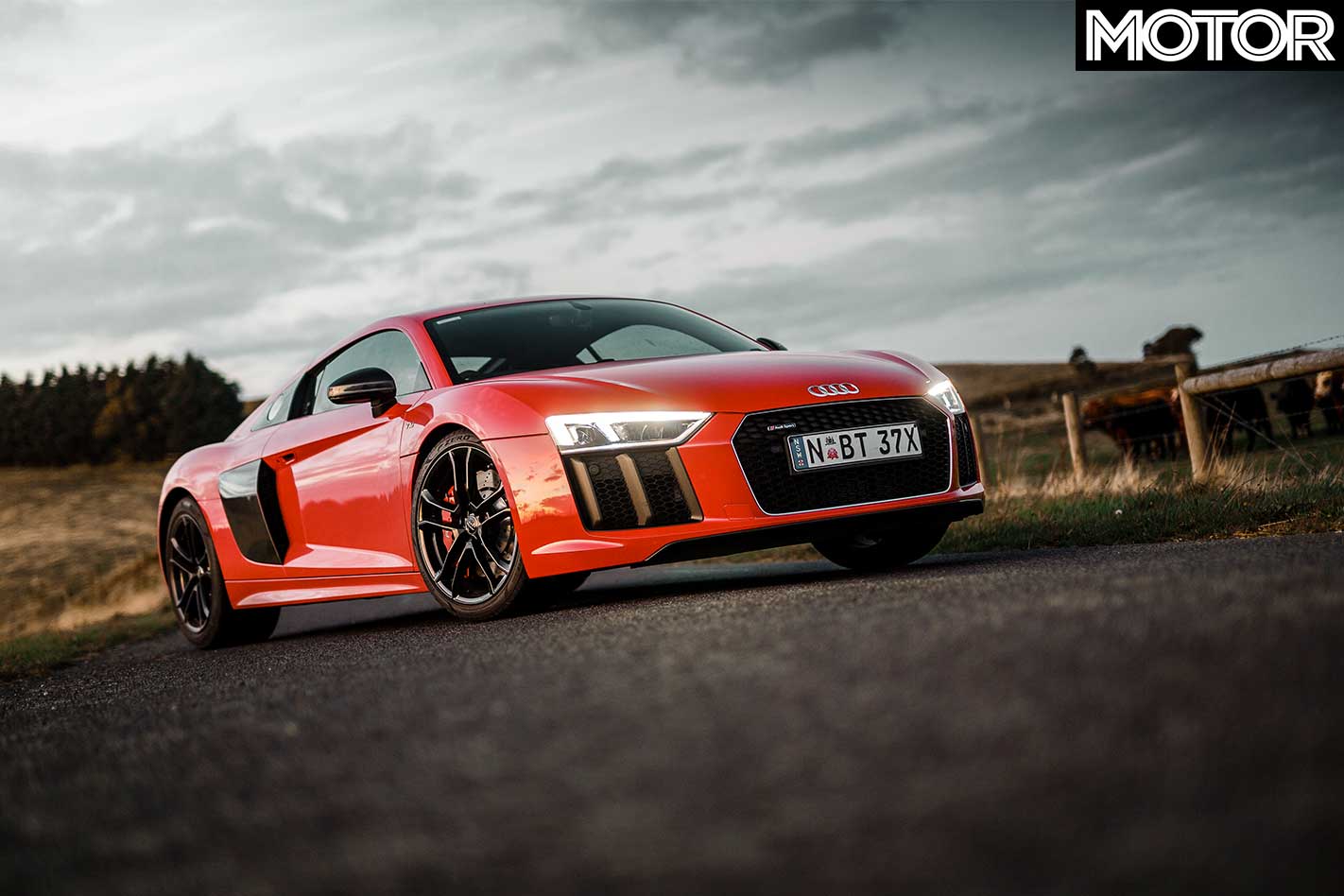
FAST FACTS Audi R8 V10 RWS
BODY: 2-door, 2-seat coupe DRIVE: rear-wheel ENGINE: 5204cc V10, DOHC, 40v BORE/STROKE: 84.5 x 92.8mm COMPRESSION RATIO: 12.5:1 POWER: 397kW @ 7800rpm TORQUE: 540Nm @ 6500rpm WEIGHT: 1590kg POWER-TO-WEIGHT: 250kW/tonne TRANSMISSION: seven-speed dual-clutch SUSPENSION: double wishbones, coil springs, anti-roll bar (f); double wishbones, coil springs, anti-roll bar (r) L/W/H: 4426/1940/1420mm WHEELBASE: 2650mm TRACKS: 1638/1599mm (f/r) STEERING: electrically assisted rack-and-pinion BRAKES: 365mm ventilated/drilled discs, 8-piston calipers (f); 356mm ventilated/drilled discs, 4-piston calipers (r) WHEELS: 19.0 x 8.5-inch (f); 19.0 x 11.0-inch (r) TYRES: Pirelli P Zero; 245/35 R19 (f); 295/35 R19 (r) PRICE: $299,500 ($321,100 as-tested)LIKE: Superb drivetrain; great chassis; looks; price DISLIKE: Firm ride; limited build run; not much else RATING: 4.5 out of 5 stars


